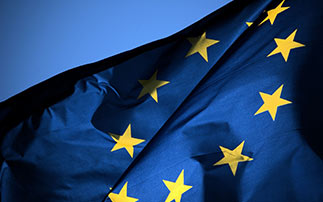In an environment where funding opportunities are rapidly changing, strategic monitoring is an essential tool for anticipating, positioning and increasing responsiveness.
For local authorities, associations, universities and businesses, implementing effective monitoring ensures that relevant calls for projects are not missed, regulatory changes are tracked and partnership opportunities are identified.
Here are the key steps for structuring a truly operational monitoring system.
Define your monitoring objectives
Before you begin, it is essential to specify what you are looking to monitor. Effective monitoring is based on a clear strategy:
-
What types of funding are you interested in (themes, programmes, levels)?
-
For which projects or internal needs?
-
Which geographical areas are concerned?
-
What types of information are you looking for (calls for projects, news, events, publications)?
This clarification allows you to select the right sources and avoid unnecessary information overload.
Identify reliable and relevant sources
Information on European funding is scattered. It is therefore crucial to rely on validated, up-to-date and regularly updated sources:
-
Official portals: European Commission (Funding & Tenders Portal), national and regional portals (europe-en-france, regional portals, etc.).
-
Management agency websites: ANR, Erasmus+, Creative Europe, Life, etc.
-
Institutional bulletins: Commission publications, evaluation reports, annual work plans.
-
Specialised networks: ERRIN, Euraxess, Enterprise Europe Network, etc.
-
Professional newsletters: newsletters, specialised monitoring services, thematic sources.
Use digital tools to automate
Monitoring can be time-consuming if done manually. It is recommended to use tools to automate part of the work:
-
Email alerts (Google Alerts, F&T Portal),
-
RSS feeds integrated into aggregators (Feedly, Inoreader),
-
Shared tracking tables (Google Sheets, Notion),
-
Curation tools (Scoop.it, Pearltrees, Diigo),
-
Specialised monitoring platforms (internal or external).
These tools allow you to receive relevant information directly without having to carry out multiple searches.
Plan your monitoring over time
To be effective, monitoring must be regular and integrated into your daily work routine:
- Define a consultation frequency (daily, weekly, etc.),
-
Allocate dedicated time for reading and analysis,
-
Share the results internally via a memo, table or team meeting.
Regularity is key to ensuring you don’t miss any opportunities.
Involve internal stakeholders
Monitoring is all the more useful when it is shared. It is important to:
Identify internal contacts (project managers, management, project coordinators),
Gather information on teams’ needs in order to adjust monitoring,
Set up effective communication channels (emails, intranet, meetings, etc.).
This encourages early mobilisation and enables strategic positioning on calls for proposals.
Analyse and qualify the information received
Not all information is useful. It is advisable to:
-
Sort calls for proposals according to your organisation’s priorities,
-
Check the source and date of publication,
-
Identify recurring calls for proposals so that you can anticipate them from one year to the next,
-
Update the information regularly.
A well-analysed monitoring system becomes a decision-making tool to guide applications.
In conclusion
Effective monitoring is not about collecting as much information as possible, but about building a structured, targeted and shared tracking system. This allows you to better seize opportunities, save time and strengthen your organisation’s funding strategy.
Key points:
-
Monitoring begins with defining your strategic objectives.
-
It relies on reliable sources and appropriate tools.
-
It must be regular, shared and analysed.
-
It is a competitive advantage for your applications.
Welcomeurope offers personalised monitoring services, with targeted alerts and advice to help you position yourself effectively for European funding.




